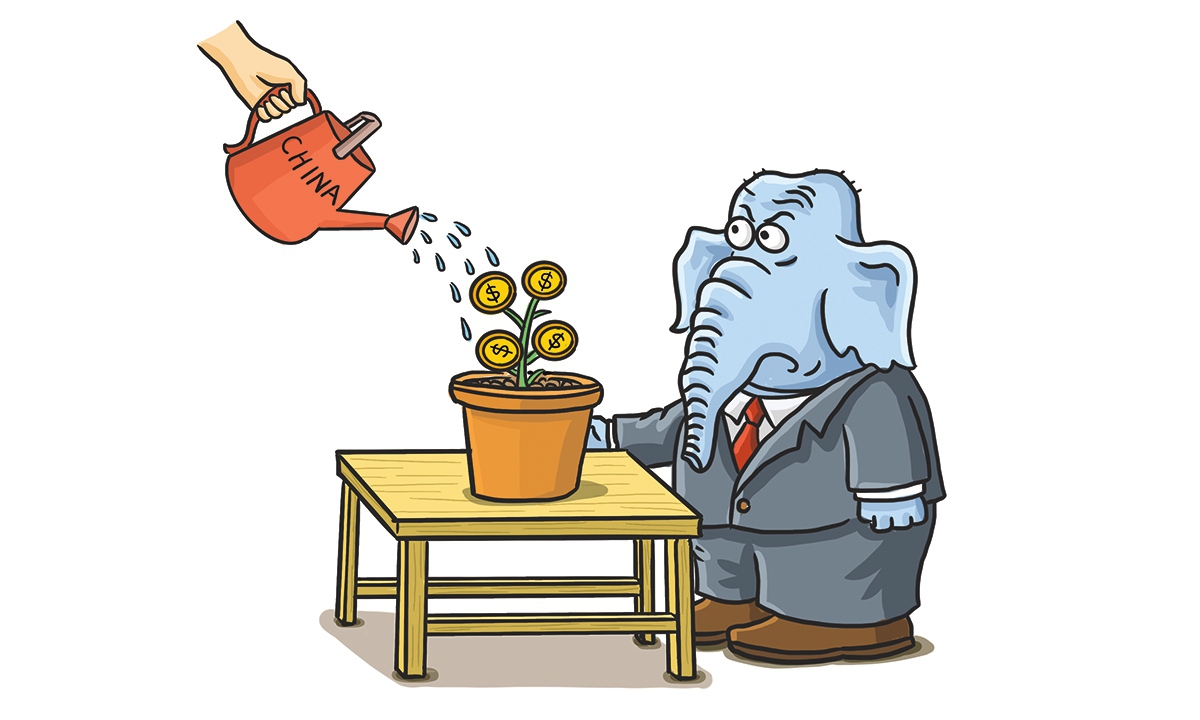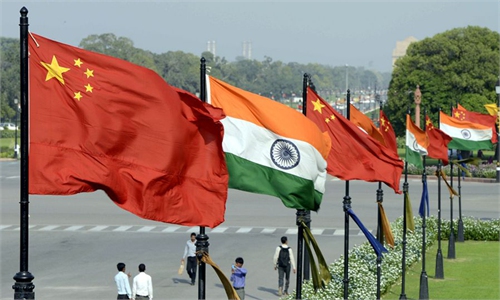
Illustration: Xia Qing/GT
India seems to be on verge of breaking the ice in economic and trade exchanges with China, which is a welcome development but necessary caution may be still required in the market.
Chinese equipment makers may still have the chance of being included in a list of "trusted" suppliers of telecom equipment for India's 5G networks as long as they meet eligibility criteria, Mint reported on Monday, citing an anonymous government official.
The news represents a gratifying change from the previous speculation. When India's telecoms department announced in early March that starting from June 15, domestic carriers can only buy equipment from government-approved "trusted" suppliers, various media outlets said the move is designed to exclude Chinese companies like Huawei.
If the Indian government does allow Chinese companies to supply equipment for its 5G networks, it will undoubtedly send a positive signal for bilateral relations and businesses from the two sides. The reasons are not hard to discern. Chinese companies have distinctive advantages in terms of both cost and technology in supplying 5G equipment, which is very attractive for countries like India with limited procurement costs. If India continues to block Chinese telecom firms for political reasons, it may be left with choice of suppliers such as Nokia Corp, Ericsson and Samsung, which will not only inflate costs for India's telecommunications operators, but also put the construction of India's 5G networks in a passive position.
There have been several pieces of news reports recently indicating the Indian government may ease its previous economic boycott of China. For instance, in February, news came that India was set to approve 45 pending investment proposals from China, including those from Chinese automakers Great Wall Motor and SAIC Motor Corp. In early March, the Indian government reportedly was planning to "speed up" Chinese investment proposals, primarily within the manufacturing sector.
A growing number of such news may, to a certain extent, reflect India's need for Chinese investment and economic cooperation. The Indian economy is currently facing great pressure because of the coronavirus pandemic, which is in urgent need of foreign investment to lift its econmy out of the economic plight.
However, it should also be noted that there are still lots of different voices regarding Chinese investment in India, and India's ban on dozens of Chinese applications remains in place.
Moreover, for a long time, India has sought to adhere to a non-alignment principle in attempt to maximize its own interests. It remains to be seen how India will make its tightrope walk in the US-China rivalry, which means that there will still be lots of uncertainties in India's attitude toward China in bilateral economic ties. In this sense, market players and investors are still advised to keep cautious attitude toward such news and wait to see further development.
It is hoped that India can take a more pragmatic approach toward China-related economic issues. After all, areas of future cooperation between the two countries are not just limited to the telecommunication sector.



